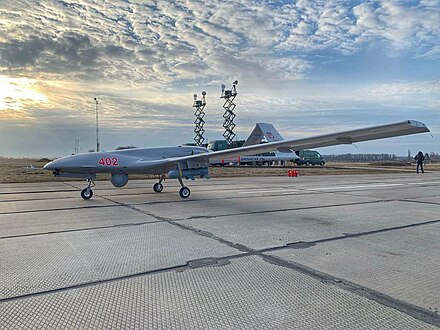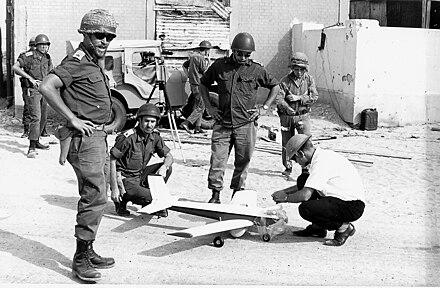
British defense experts suggest that based on experience in Ukraine, armies should consolidate drones within specialized battalions equipped with skilled pilots capable of flying them and programmers adept at swiftly adjusting to ongoing jamming attempts.

According to a report from the Royal United Services Institute (RUSI), Ukrainian data indicates a significant increase in the effectiveness of Unmanned Aerial Vehicle (UAV) operations when conducted by dedicated formations, with efficiency rising from 10 percent to as high as 70 percent for certain mission types. Although the specifics of the data are not provided, the report mentions that it is based on Ukrainian General Staff datasets accessed by RUSI in February 2024.

The RUSI report advocates for the establishment of “mass precision strike complex” units that deploy integrated swarms of drones, encompassing various reconnaissance and combat UAVs. This concept resembles the approach of manned combat jet “strike packages,” which incorporate attack, escort, and electronic warfare aircraft for missions.

It’s worth noting that the report does not propose stripping infantry platoons of their backpack-carried drones, which have proven essential in conflicts in Ukraine and the Middle East. However, it argues that for certain tasks, such as long-range surveillance and strike operations, dedicated units offer greater efficiency and cost-effectiveness. The report concludes that while UAVs may be distributed to provide units with situational awareness, the management of mass precision strike capabilities should be entrusted to specialist formations.

Additionally, it emphasizes the importance of continuous adaptation and updating of supporting mission data files, as contemporary theaters have shown that UAV capabilities are highly vulnerable to countermeasures as adversaries learn about their functioning. This necessitates scarce skills in UAV design, programming, and centralized data accumulation.

RUSI proposes equipping each drone battalion with a comprehensive set of resources necessary for conducting various UAV operations. According to RUSI researchers Jack Watling and Justin Bronk, these units would encompass “airframes and their payloads, and the launch crews, command links, planning tools, intelligence support and design teams required to field the capability.”

The drone battalions would incorporate five distinct types of UAVs, spanning a spectrum of capabilities from reconnaissance of enemy movements to targeted strikes on critical rear positions. This selection would include “situational awareness UAVs optimized for tactical reconnaissance; tactical strike UAVs; ISR [reconnaissance] UAVs able to penetrate into operational depth; operational strike UAVs; and platform-launched effects designed specifically to synchronize with and enable other weapons systems.”

The concept revolves around establishing self-contained units capable of identifying and neutralizing targets across the battlefield and extending beyond its borders. In direct support of friendly ground forces engaging the enemy, swarms of expendable reconnaissance drones would operate up to 5 miles beyond the enemy’s front line.

Their primary task would be to pinpoint targets, such as armored vehicles and infantry fortifications, which could then be swiftly engaged by the battalion’s cost-effective attack drones.

Simultaneously, reconnaissance drones with longer operational ranges would venture up to 60 miles into the enemy’s rear, scanning for artillery emplacements, air defense installations, and command centers that could be targeted by missiles and other precision-guided weapons.

Furthermore, the drone battalion would deploy long-range strike assets, capable of reaching distances of up to 300 miles, to eliminate fixed installations like supply depots, bridges, and ammunition stockpiles. The report suggests that by posing a persistent threat of precision strikes against logistical infrastructure and command and control nodes, these capabilities would significantly impede the enemy’s ability to resupply and coordinate their forces, thereby hindering their ability to concentrate their efforts effectively. Additionally, these capabilities raise concerns for air and naval forces as they pose a threat to critical infrastructure and basing facilities.

To enhance the effectiveness of reconnaissance and strike drones while safeguarding them against enemy air defenses, the battalion would be equipped with various support UAVs. These include long-endurance airborne communications drones tasked with relaying data links between combat UAVs and ground operations, electronic warfare drones designed to disrupt radars and communication systems, and decoy drones intended to confound enemy air defenses.

The conflict in Ukraine serves as a stark example of the evolving nature of warfare, where drones must continually adapt to survive enemy attempts to disrupt their control links. According to the report, by mid-2023, the average period of peak effectiveness for a newly deployed UAV navigation and control system on the battlefield was approximately two weeks, with diminishing effectiveness over the following four weeks. Within six to twelve weeks, adversaries had amassed enough data on the waveforms and techniques being utilized to effectively jam or spoof the system across the front lines.

Non-drone units lack the expertise to identify and address the software and communications challenges posed by enemy countermeasures. Therefore, the report concludes that concentrating UAV operations within a mass precision strike complex is logical.

The debate over whether to concentrate or disperse assets is a longstanding one. Prior to World War II, tanks were dispersed among infantry divisions in small groups, while aircraft were primarily assigned to ground forces. However, experience showed that tanks were most effective when concentrated in tank divisions, and aircraft were better suited to an independent air force specializing in aerial operations.
Relevant articles:
– Armies need their own drone air force flown by specialist soldiers, study says, Business Insider
– Armies need their own drone air force flown by specialist soldiers, study says, Yahoo News UK
– US special operations leaders having to do more with less, learning from Ukraine war, ABC News – Breaking News, Latest News and Videos
